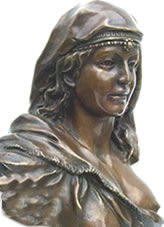

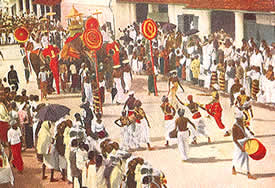
Gypsy travels
The early history of the Gypsy is disputable. The earliest story is traceable to an Arab historian: he related that 10,000 Indian dancers and musicians were brought to the court of the Shah of Persia (Iran) in 420 AD. Some current thinking tends towards a later diaspora about 1,000 years ago. Whichever, during the following centuries these people were moved on (both willingly or by force) through most of the Arab countries, North Africa, Greece and the Ottoman Empire around the Mediterranean Sea.
Gypsy traits as we know them now were visible then. By 1050 in Constantinople (Istanbul) they were noted as being fortune-tellers, acrobats, metal-workers, musicians and animal-tamers. In 1322 an Irish pilgrim wrote of a nomadic people living in Crete: "They rarely or never stop in one place beyond thirty days but always wander and flee as if accursed by God, and after the thirtieth day they remove themselves from field to field with their oblong tents, black and low, and from cave to cave".
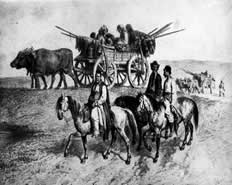
Gypsies served as soldiers and craftsmen in the Ottoman army, and they went with it as the Ottoman Empire expanded into Eastern Europe during the 14th century. From there, they dispersed into the rest of Europe, Britain and beyond, reaching Russia and Scandinavia by the end of the 16th century. Four Gypsies even sailed to Trinidad with Columbus when he went on his third voyage to the New World in 1498.
By the end of the 19th century they had also travelled to (often transported to) Australia, Canada, and North and South America.
There are now roughly 12 million Gypsies worldwide. In 1971 the First World Romani Congress was held in London, and the word Roma (meaning people in Romani) was adopted as the official name of the Gypsies.
British Gypsies
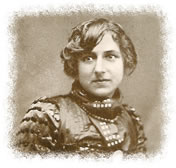 Gypsies probably crossed over to Britain during the 15th century. The first record is from 1505 when Count Antoine Gagino of Little Egypt turned up on a Scottish ship bound for Denmark. Within a few decades these "outlandish people, calling themselves Egyptians" were being expelled by Henry VIII.
Gypsies probably crossed over to Britain during the 15th century. The first record is from 1505 when Count Antoine Gagino of Little Egypt turned up on a Scottish ship bound for Denmark. Within a few decades these "outlandish people, calling themselves Egyptians" were being expelled by Henry VIII.
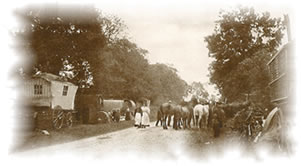 Currently, there are about 2/300,000 Gypsies and other Travellers living in Britain. The groups in each country call themselves by different names, and figures for them are probably under-estimates. The Kale of Wales may number 2,000, and the Romanichals of England 65,000. Fewer Gypsies ventured to Ireland and Scotland, and in both countries there were plenty of itinerant people already. As such, the Minceirs of Ireland (30,000) and Nachins of Scotland (20,000) do not claim to be of Gypsy origin. Fairground people number about 25,000, and New Age Travellers 15,000.
Currently, there are about 2/300,000 Gypsies and other Travellers living in Britain. The groups in each country call themselves by different names, and figures for them are probably under-estimates. The Kale of Wales may number 2,000, and the Romanichals of England 65,000. Fewer Gypsies ventured to Ireland and Scotland, and in both countries there were plenty of itinerant people already. As such, the Minceirs of Ireland (30,000) and Nachins of Scotland (20,000) do not claim to be of Gypsy origin. Fairground people number about 25,000, and New Age Travellers 15,000.
Famous Gypsies
Well known people with Gypsy forebears include:
Saint Mother Teresa
Singers Elvis Presley, David Essex
Actors Charlie Chaplin, Michael Caine, Bob Hoskins, Yul Brunner, Rita Hayworth
Musician Django Reinhardt
Footballer Eric Cantona
Author John Bunyan
Victorian explorer Richard Burton.
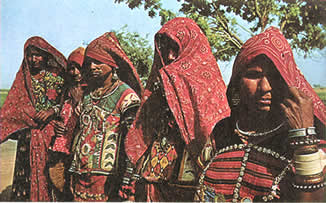 Lords of Little Egypt
Lords of Little Egypt
An exotic dark-skinned people travelled with the Ottoman (Turkish) army during its invasion of Europe in the 14th century. Their leaders called themselves 'Lords of Little Egypt', and eventually the name of these colourful Egyptians was shortened to 'Gypsies'. However, the Gypsies didn't really hale from Egypt. Probably, their initial migration was from North West India 1,000 or more years ago. This was worked out because their language of Romani is akin to that spoken in North West India today; bloodgroup and DNA analyses support this belief.
The Romani language
The basic grammar and vocabulary of Romani is similar to that of Hindi and Punjabi and therefore suggest its origin to be in North West India. However, it differs greatly throughout the world, with many forms and dialects, having been enriched by the languages of the countries through which the Gypsies travelled or in which they settled. For example, the Romani name for a Gypsy caravan is vardo, which comes from the Iranian word vurdon.
Although Romani is now being written down, traditionally it was an oral language. In order to communicate between themselves, Gypsies developed a system of leaving messages made from natural materials along their route. These signs are called patrin or patteran and may consist of twigs, leaves, stones, etc arranged in a particular fashion. They might indicate how many are in the group, their direction of travel, or even how friendly the locals are towards Gypsies!
Do you recognise these words? These everyday English words (followed by |
|
|
lolly (money) |
bosh (nonsense) |
mockers (jinx) |
busk (play music) |
mush (mate) |
char (cleaner) |
nark (informant) |
chav (youth) |
pal (friend) |
corker (lie) |
posh (classy) |
cosh (stick) |
rogue (rascal) |
cove (chap) |
rum (strange) |
cushti (good) |
stir (prison) |
dad (father) |
tanner (sixpence) |
Strict Copyright Warning
All texts/audio/still/motion picture images are strictly copyright to ValleyStream Media 1980-2009 or to the stated contributor/
copyright holder/s or "unKn". Any unauthorised copying of any images or material from this website for any use is strictly prohibited without written permission from the image owners - owners of unknown images ("unKn") from this website please contact us for fair use or image withdrawal. All rights reserved.
